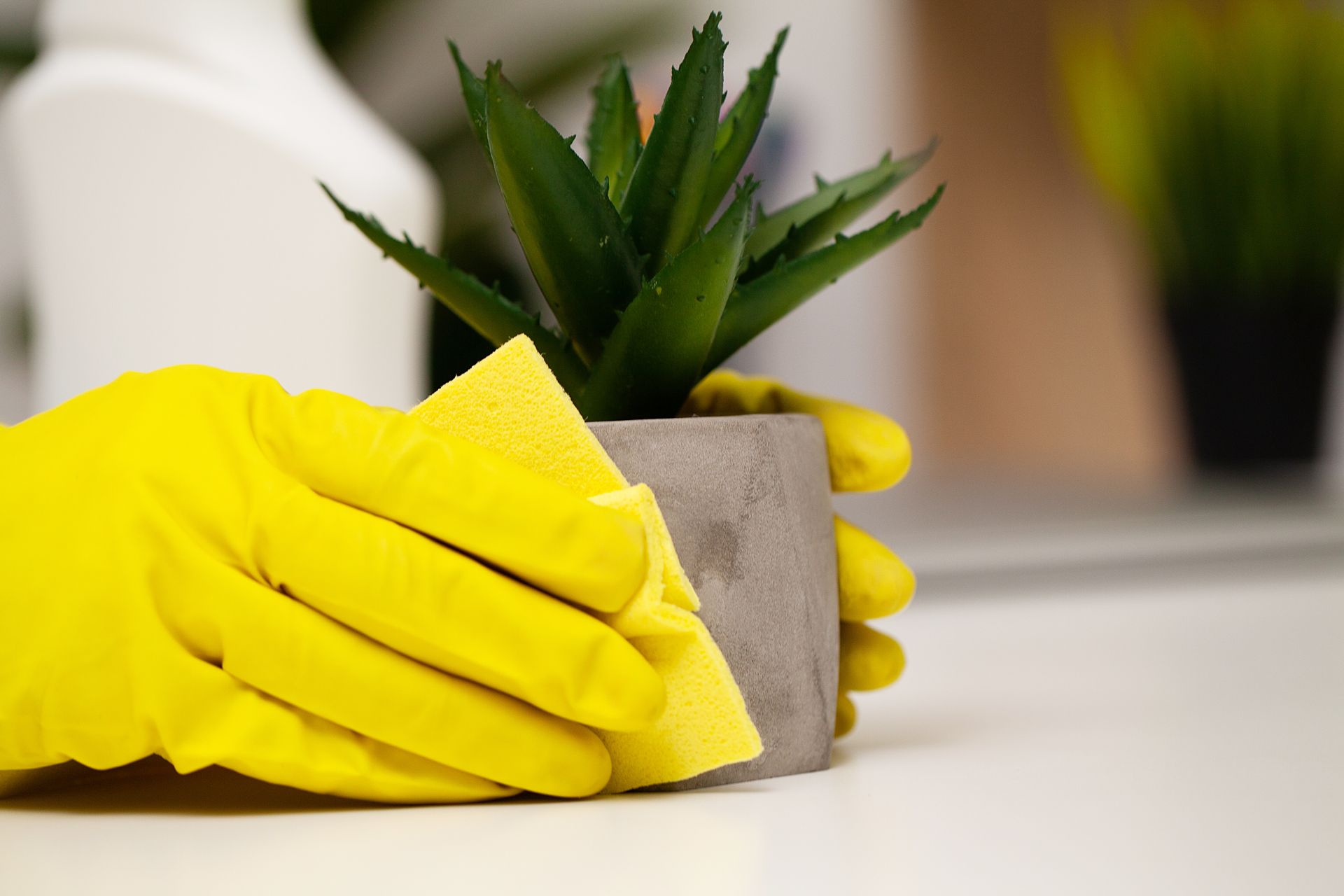Eco-Friendly Cleaning 101
Spring is here! You know what that means, right? It's time to clean up around the house. The good news is that green cleaning products are easier to find. There are several ways to make your home spring cleaning more eco-friendly and healthy for everyone in your family (and the planet). Here are six tips for making sure your spring cleaning routine doesn't take a toll on the environment or your health:
Health Benefits of Spring Cleaning
Spring cleaning is a great way to improve your health and the health of your family. It can also help relieve stress, improve energy levels, and reduce anxiety.
When you clean your home regularly, it improves air quality by reducing allergy symptoms and killing bacteria that can weaken your immune system. If you suffer from respiratory issues caused by mold, dust, or other particles, spring cleaning is an ideal time to eliminate these allergens before they start causing problems for you or someone else in the home.

Dust
Use a duster with a soft cloth. Don't use a vacuum cleaner that has been used to clean the carpet because it will pick up dirt and dust from your floor and any dead skin cells, which can lead to allergies or asthma attacks if you have allergies. Also, don't use a vacuum cleaner that's been used on upholstery because there are many different types of upholstery materials (e.g., velvet), and each requires its technique for cleaning--some require dry cleaning only!
Cleaning windows
Use a squeegee to clean windows. A squeegee is an ideal tool for removing water from your windows.
Clean windows with a microfiber cloth and vinegar/water mixture. Mix one part white distilled vinegar with two parts water in a spray bottle, then use it on your windows as you would any other cleaner--but remember that this mixture will not leave streaks! You can also substitute lemon juice for the vinegar if you'd like to give your home a fresh scent while cleaning it!
Cleaning in the morning or evening is best when temperatures outside are cooler, so you don't have to worry about sweating while working on this task!
Cleaning walls and baseboards
Clean the walls and baseboards with a damp cloth. Use a sponge with warm water and a little bit of dish detergent to wipe away any dirt or grime that has accumulated on your walls.
Clean the fixtures in your bathroom with microfiber cloths. These cloths will help you get into all those hard-to-reach places, like behind faucets, toilets, and sinks, without scratching them up!
Vacuum carpets and upholstery
Use a HEPA filter vacuum that has been certified to meet the standards of both the US Environmental Protection Agency (EPA) and Underwriters Laboratories (UL). A HEPA filter traps particles as small as 0.3 microns, which is great for removing allergens from your home. To make sure yours is working properly, clean it regularly with soap and water or by running it through its self-cleaning cycle on low suction power (you can do this once a month).
Clean upholstery with either soap and water or specialized cleaners made specifically for upholstered furniture (these products should be labeled "non-toxic"). If stains remain after cleaning, try using one of these techniques: place an absorbent cloth over the soiled area; sprinkle baking soda over the top; let sit overnight; brush off in the morning; repeat if necessary.[1]
Avoid harsh chemicals
Avoid harsh chemicals. Using a vacuum with a HEPA filter is an effective way to eliminate dust and dirt on hard surfaces, but it's not the only option. A damp cloth or microfiber cloth will also do the trick.
Use vinegar or baking soda to clean up small messes like spills and stains in your home. These natural products are cheap and effective at removing stains from fabrics and carpets without leaving any harmful residue.
Lemon juice can be used as an alternative cleaning agent in place of bleach when scrubbing out tough stains on white fabrics; just pour some lemon juice directly onto the stained area before applying heat (either by ironing or steaming) until all traces disappear! This method works best on oily spots such as lipstick marks; be sure not to use too much liquid to not damage your fabric further down the road!
Essential oils such as lavender have antibacterial properties which help prevent mold growth around wet areas such as shower curtains/shower heads, etcetera...these should be utilized during springtime since most people tend towards using hot showers more often during warmer seasons anyway, so there will likely be more moisture produced inside these types rooms than usual."
We're Mother Earth Cleaning - The Standard in Eco-Friendly Residential Cleaning
Send us an email: hi@motherearthcleaning.co Give us a call: (240) 772-5857
Contact Us
Our Services
- Eco-Friendly Residential Cleaning
- Deep Cleaning Service
- Commercial Cleaning Services
- Airbnb Cleaning
- VRBO Cleaning
- Vacation Rental Cleaning
- Refrigerator Cleaning
- Oven Interior Cleaning
- Interior Window Cleaning
- Laundry Service
- Organizing Services
- Disinfecting/Sanitizing Service
- Senior & Respite Care Service
All Rights Reserved | Mother Earth Cleaning